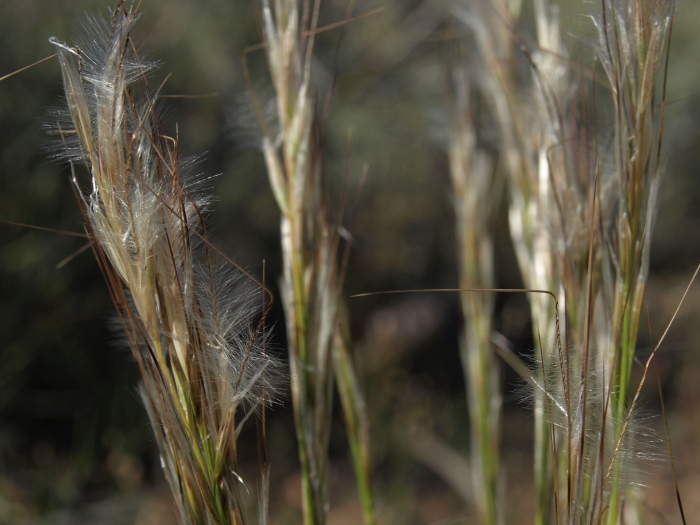Desert Needlegrass
(Stipa speciosa)
Desert Needlegrass (Stipa speciosa)
/
/

Jim Morefield
CC BY 4.0
Image By:
Jim Morefield
Recorded By:
Copyright:
CC BY 4.0
Copyright Notice:
Photo by: Jim Morefield | License Type: CC BY 4.0 | License URL: http://creativecommons.org/licenses/by/4.0/ | Rights Holder: Jim Morefield | Publisher: iNaturalist | Date Created: 2019-06-07T17:52:16-07:00 |


































Estimated Native Range
Summary
Stipa speciosa, commonly known as Desert Needlegrass, is a perennial bunchgrass native to arid regions, specifically desert scrub and grasslands in the southwestern United States and northern Mexico, as well as Chile and Argentina. It is well-adapted to open, dry habitats with sandy or gravelly soils. This grass typically reaches a height of 1–2 feet, with narrow, rolled leaf blades less than a millimeter wide that contribute to its drought tolerance. The inflorescences are up to 2 inches long, dense, and fluffy, appearing from late spring to early summer. The plant’s overall form is a dense clump that remains stiff even as it dries.
Desert Needlegrass is valued for its low water requirements and ability to thrive in full sun, making it suitable for xeriscaping and naturalistic plantings in arid regions. It is used for erosion control and as an ornamental grass in rock gardens and desert landscapes. While it is drought-resistant, it can benefit from occasional deep watering during prolonged dry periods. Desert Needlegrass is not known for significant disease or pest problems, but it can be sensitive to overwatering and poor drainage.CC BY-SA 4.0
Desert Needlegrass is valued for its low water requirements and ability to thrive in full sun, making it suitable for xeriscaping and naturalistic plantings in arid regions. It is used for erosion control and as an ornamental grass in rock gardens and desert landscapes. While it is drought-resistant, it can benefit from occasional deep watering during prolonged dry periods. Desert Needlegrass is not known for significant disease or pest problems, but it can be sensitive to overwatering and poor drainage.CC BY-SA 4.0
Plant Description
- Plant Type: Grass
- Height: 1.5-2.5 feet
- Width: 4.5-6 feet
- Growth Rate: Moderate
- Flower Color: N/A
- Flowering Season: Spring
- Leaf Retention: Evergreen
Growth Requirements
- Sun: Full Sun
- Water: Low
- Drainage: Medium
Common Uses
Fire Resistant, Low Maintenance
Natural Habitat
native to arid regions, specifically desert scrub and grasslands in the southwestern United States and northern Mexico, as well as Chile and Argentina
Other Names
Common Names:
Scientific Names: , Achnatherum speciosum, Stipa speciosa, Pappostipa speciosa, Jarava speciosa, Stipa californica, Stipa speciosa var. media, Pappostipa speciosa var. breviglumis, Pappostipa speciosa var. parva, Stipa speciosa var. speciosa
GBIF Accepted Name: Pappostipa speciosa (Trin. & Rupr.) Romasch.